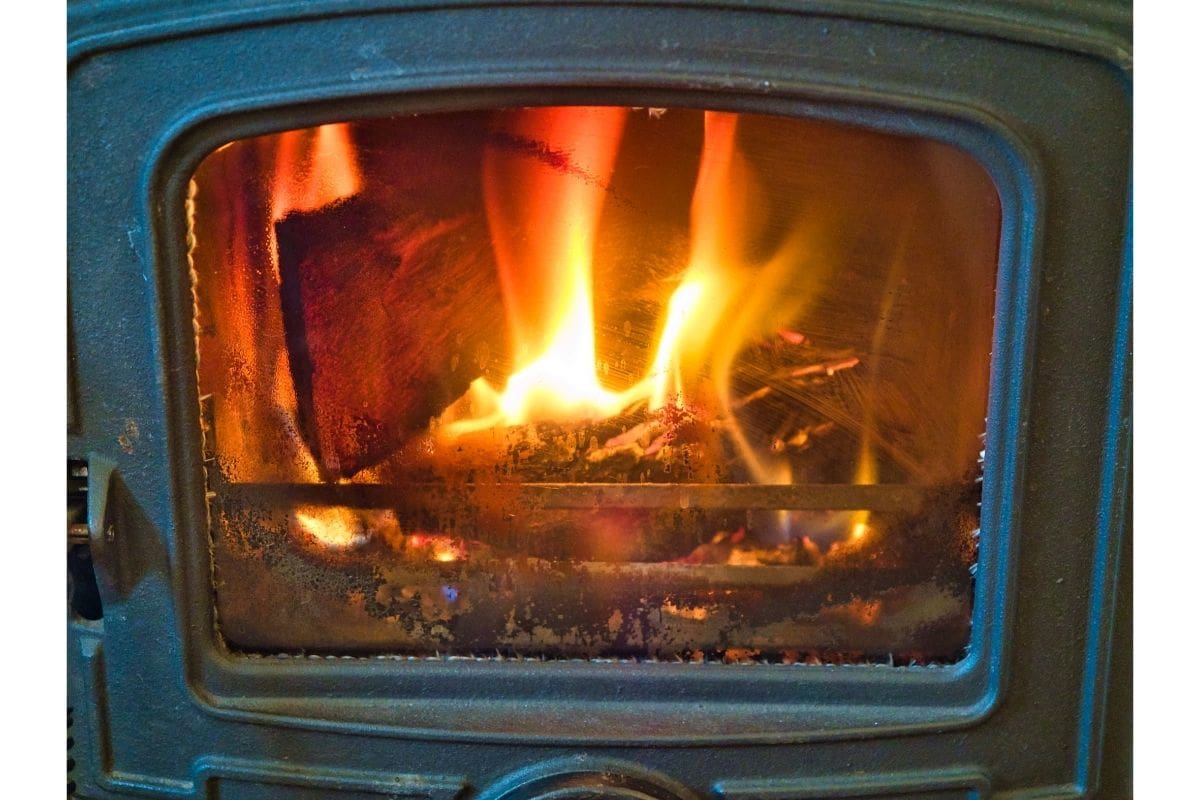As more and more studies are performed, and increasingly more data is made available, we should all be doing our bit to care for the environment. While you should still want to heat your home, there are different ways to do so and each comes with its own carbon footprint.
An underfloor heating system such as Wundatherm’s Premium+ Overfloor boards is highly recommended and comes with its own smart controls. However, there are several more rustic options out there.
One of which is log burning yet as more concerns are made about the environment, the more you may be wondering how detrimental this type of heating can be. In this guide, we will look at how log burning contributes to small particle pollution and whether log burners are bad for the environment.
We will also look at how to reduce their environmental impact and what eco-friendly alternatives there are.
How Log Burning Contributes To Small Particle Pollution
When wood is burned to heat a home, the process produces PM2.5 which is known as tiny particle pollution. Log burning is known to damage health and even cause early deaths as the toxins enter the bloodstream.
These toxins then get lodged in the brain, heart, and several other organs causing damage and triggering off several illnesses. While coal burning has been reduced gradually over time, these gains have been diminished by the increased log burning in the home and by biomass burning carried out by industry.
Are Log Burners Bad For The Environment?
Undoubtedly, log burners are bad for the environment as they contribute to global warming due to their emissions. Research has shown that wood-burning stoves can still produce hundreds of times more tiny particles than an HGV truck.
Due to the proximity of a household to be close to the log burner to feel the heating benefits, the associated health issues can be more pronounced and quicker than traffic emissions, even if the house is close to a motorway.
Not only are the toxins released by the log burning a health issue but the wood smoke can quickly fill a room.
Wet wood is also a prevalent issue as these undried logs are relied upon for heating in millions of homes. When wet wood is burned, more harmful particles are released compared to dry wood.
These particles can still go far into the body and be very harmful to an individual’s health and the environment.
Granted, log burners are close to a traditional open fire and can claim to be an effective means of heating up a household with an aesthetic of their own yet they are considered bad for the environment.
Trees do absorb carbon dioxide so there is an argument that if the log burning was done in a forest then the surrounding trees could re-absorb that CO2. However, in an urban area, this practice is far less sustainable and the household would still suffer from inhaling those harmful particles.
How To Reduce The Environmental Impact Of Log Burning
If you do have a log burner then you should look to use it efficiently to reduce the environmental impact and the amount of emissions. Only ever use the log burner when you need to and once your home is warm, you no longer need to feed the burner.
Perform regular maintenance by taking out any soot or ash and ensure that your chimney is clear. You should stick to dry wood as opposed to wet wood and you can also buy sustainable firelighters which are free of fossil fuels and 100% carbon-neutral, they also claim to be non-toxic.
The Eco-Friendly Alternatives To Log Burning
Thankfully, there are alternatives to log burning which are better for the environment. An efficient heat delivery system is underfloor heating such as Wundatherm’s Premium+ Overfloor boards.
A gas fireplace can also be highly efficient as they require less energy and can be a lot cheaper than a wood or electric fire without producing any smoke. However, a gas fireplace would still burn fossil fuels.

A bioethanol fireplace could also be considered environmentally friendly as it uses a renewable fuel that is produced by fermenting sugar. No ash, soot, or smoke is released either and it does prove efficient for heating.
You would still need to buy a bioethanol fireplace yet the running costs should prove beneficial over time with little cost for installation.
Frequently Asked Questions
As a producer of tiny particle pollution known as PM2.5, log burning has been found to produce almost three times as much as road traffic emissions.
While trees can still absorb some of these particles, the pollution is more dangerous as it is quickly absorbed by the body more readily due to the proximity of the fire.
Even more so than if the home was located close to a major motorway.
How Much Air Pollution Can A Log Burner Produce Compared To A Natural Gas Furnace?
This amount can depend on the type of log burner and even the type of fireplace. However, the amount of air pollution for a home consistently using a log burner can be between 3,000 and 90,000 times more pollution than a natural gas furnace.
Final Thoughts
With climate change being a major talking point in recent years, we should be looking beyond log burners to heat our homes. Data has shown that wood and log burners produce more particle pollution than even road traffic in certain countries, including the UK.
If you are looking to heat your home effectively and look out for the environment, there are alternatives available. One of the most efficient heat delivery systems is by using an on-demand underfloor heating system such as Wundatherm’s Premium+ Overfloor boards.